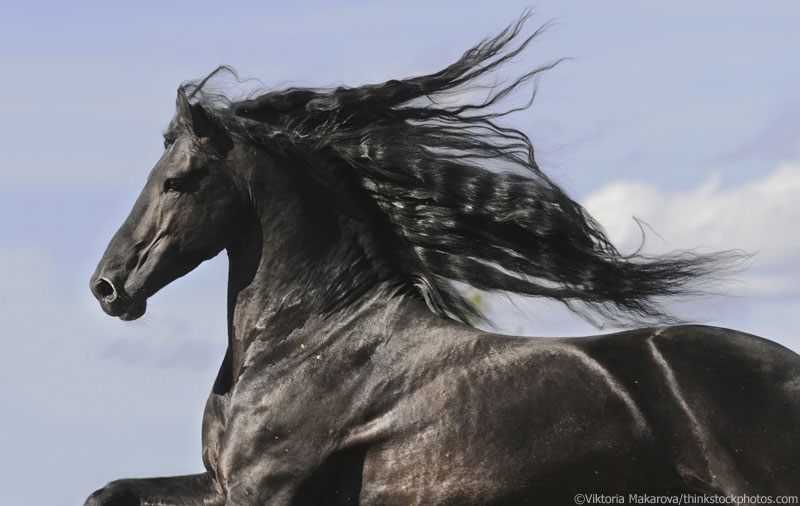Baroque Horse Breeds: Friesian
The Friesian is one of Europe’s oldest breeds and gets its name from the Friesland region in the Netherlands. The breed originated during the Middle Ages, even as far back as the 4th century.


“The Friesian exemplifies strength and has an intense presence and beauty that can certainly be described as extravagant and highly ornate, just like the Baroque period,” says MaryAnne Girard, executive secretary of the Friesian Horse Society in Plattsmouth, Neb.
“The Friesian’s personality as an easy-going, well-tempered horse also displays the characteristics of a Baroque horse,” adds Jason Tice, executive director of the Friesian Horse Association of North America in Lexington, Ky.
The breed’s strength, stamina and maneuverability made it the perfect mount for medieval knights. Its flashy, high-stepping trot also made it a favored carriage horse for European royalty.
Friesians almost became extinct worldwide during the turn of the 20th century, as many of them were crossed to other breeds to create a faster horse for trotting races. In fact, only three purebred stallions were left by 1907. However, while World War II very nearly destroyed other breeds, it brought the Friesian back from the brink of extinction when Dutch farmers turned to horses for transportation and fieldwork because of fuel shortages.
The Friesian was first imported to North America in the 17th century, but due to crossbreeding, it disappeared. In 1974, the breed was re-introduced in the United States. The Friesian is still considered rare in North America, but its numbers are growing because of the demand for these romantic horses.
Friesian FactsWith its dark coat, flowing mane and tail, and feathered legs, the Friesian’s striking appearance leaves an impression. The long, arched neck is rather upright and ties in to rounded withers. The head is expressive and well-sculpted with small, elegant ears. Its compact body, powerful shoulders and sloping, strong hindquarters create movement that is long-reaching, powerful and supple. The Friesian is a popular carriage horse, but because of its expressive movement, athleticism and kind temperament, it excels in dressage as well. Height: 14.3 to 16 hands Colors: Dark bay, black and dark brown. A small star is the only white marking allowed. Associations: |
Back to Baroque Horse Breeds >>
This article originally appeared in the August 2010 issue of Horse Illustrated magazine. Click here to subscribe!
Recent Posts
ASPCA Right Horse Adoptable Horse of the Week: Nyssa
Welcome to Horse Illustrated’s weekly installment of the Right Horse Adoptable Horse of the Week, offered in partnership with the…
How a Horse Girl Stayed Horsey Despite Not Riding for Years
After growing up horsey, Nancy still held on to her identity as a “horse girl” even when she hadn’t ridden…
Barn Banter – Episode 29
Welcome to Barn Banter, the official podcast of Horse Illustrated. In Barn Banter episode 29, hosts Susan Friedland and Horse Illustrated…
How the Nurse Mare Industry is Changing for the Better
The nurse mare industry has been a source of controversy over the years, but practices are changing—meaning a better outlook…
Practical Horse Care: Four Must-Have Products for Every Equine Owner
Horse ownership comes with incredible rewards: the thrill of a pleasure ride, the camaraderie of competition, and the deep bond…
Brain Games: Equestrian Neuroscience
By tapping the power of neuroscience and the miracle of brain plasticity, spending just a few minutes a day practicing…